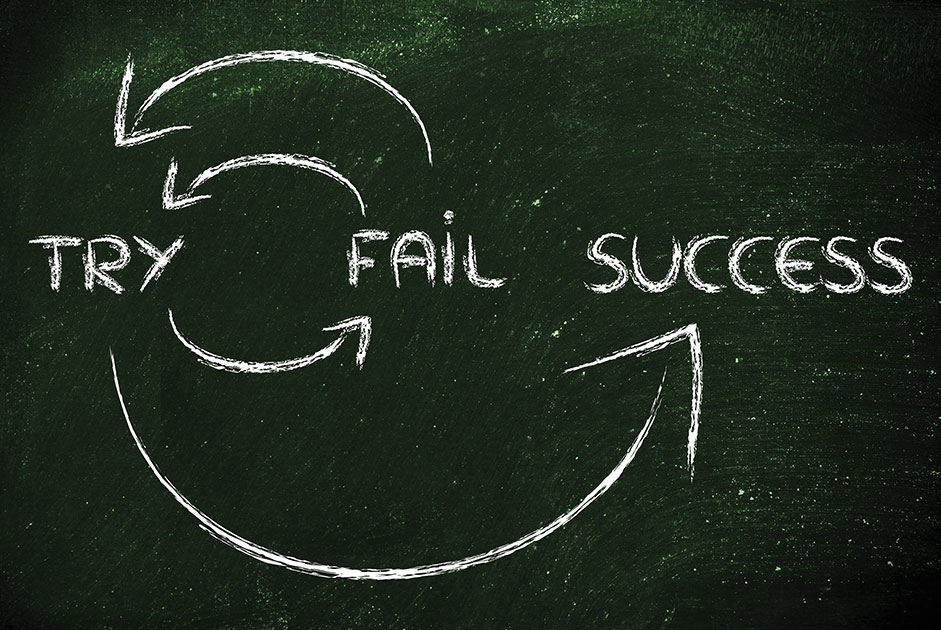By Lane Houk
In the dynamic business world, leadership is often challenged to navigate through failures. Renowned leadership guru John Maxwell has a profound saying: “You can go from failure to success, but you can never go from excuses to success.” Embracing failure is an essential ingredient of success and a hallmark of effective leadership. This article outlines a best practices guide for turning failure into a springboard for success. Much of it comes from a session on leadership by John Maxwell that I attended. I wanted to create a real framework for implementing this into our company. I hope this helps you as well!
Table of Contents
- 0.1 Embracing Failure: A Fundamental Shift in Perspective
- 0.2 Creating an Accountable and Failure-Acceptive Environment
- 0.3 Anticipating Failure: An Essential Practice
- 0.4 Maintaining Forward Momentum and Belief
- 0.5 Deploying a Failure Response Cycle
- 0.6 Sharing Failures: A Tool for Bonding and Growth
- 0.7 Learning from Others: Fostering Collective Growth
- 0.8 Leveraging Failures to Improve
- 0.9 Re-entry and Repeat: The Journey to Continuous Success
- 0.10 Encouraging Humility and Resilience
- 0.11 Excuses: The True Foe of Success
- 0.12 The Importance of Consistency
- 1 John Maxwell’s Core Leadership Principles:
- 1.1 1. Create a culture of accountability and failure acceptance
- 1.2 2. Embrace “Hard” and Anticipate Failures
- 1.3 3. Keep Moving and Believing
- 1.4 4. Develop a Process to Handle Failures
- 1.5 5. Implement the Cycle of Success
- 1.6 6. Encourage Sharing of Failures
- 1.7 7. Ask Key Questions to Promote Learning and Growth
- 2
- 3 Action Plan for Leaders on Using Failure to Produce Ongoing Success:
- 3.1 1. Embrace Failure:
- 3.2 2. Create an Accountable Environment:
- 3.3 3. Anticipate Failure:
- 3.4 4. Keep Moving:
- 3.5 5. Believe in Yourself:
- 3.6 6. Establish a Failure Response Cycle:
- 3.7 7. Share Failures and Lessons:
- 3.8 8. Learn from Others:
- 3.9 9. Leverage Failures to Improve:
- 3.10 10. Re-enter and Repeat:
- 3.11 11. Encourage Humility:
- 3.12 12. Stay Resilient:
- 3.13 13. Avoid Excuses:
- 3.14 14. Practice What You Preach:
- 3.15 15. Be Consistent:
- 3.16 16. Value Feedback:
- 3.17 17. Reframe Perspective on Failure:
- 3.18 18. Empower Your Team:
- 3.19 19. Develop the Team’s Skills:
- 3.20 20. Focus on the Big Picture:
- 3.21 21. Celebrate Successes and Failures:
- 4 Summing it all up
Embracing Failure: A Fundamental Shift in Perspective
It all begins with a shift in perspective. To cultivate an environment where failures become stepping stones toward success, leaders need to accept failure as an integral part of the growth process. It’s not a catastrophe but an opportunity for learning and improvement.
Creating an Accountable and Failure-Acceptive Environment
An accountable environment fosters a culture of learning rather than blame. Leaders must encourage team members to own their mistakes, learn from them, and consider these instances opportunities for personal and professional growth. A blame-free culture breeds creativity, fosters collaboration, and promotes risk-taking.
Anticipating Failure: An Essential Practice
A well-prepared leader understands failure is not a matter of if but when. Anticipating potential failures and having a risk mitigation plan reduces their impact, fosters resilience, and allows quick recovery.
Maintaining Forward Momentum and Belief
One crucial practice that leaders must adopt is to keep moving, regardless of failures. This persistence becomes the fuel that drives innovation and success. Concurrently, leaders must foster a culture where every team member believes in their abilities, their ideas, and the collective potential of the team.
Deploying a Failure Response Cycle
Effective leadership involves being proactive rather than reactive. Following John Maxwell’s Cycle of Success, leaders must develop a structured process to handle failures, which includes evaluation, learning, improvement, and re-entry.
The Cycle of Success: A Deeper Dive
Understanding and implementing John Maxwell’s Cycle of Success is critical in transforming failures into success. It provides a structured, iterative process that encourages continuous learning and improvement. Here’s a detailed overview of the cycle’s five stages:
- Testing: This is the first stage where you explore new ideas, methods, or strategies. It’s about taking risks, innovating, and stepping out of your comfort zones. Every test is an opportunity to learn something new, regardless of the outcome.
- Failure: Failure is an inevitable outcome of testing. However, this is not a dead-end but an integral part of the cycle. Embracing failures and viewing them as lessons rather than setbacks sets the stage for subsequent growth.
- Learning: This stage involves extracting lessons from failures. By analyzing what went wrong, you gain insights into how to avoid similar mistakes in the future and how to improve. Remember, learning is only possible when failure is accepted and understood.
- Improvement: The insights gained from the learning stage should be translated into actionable improvements. These improvements involve tweaking strategies, refining processes, or enhancing skills. The key is to act upon what you’ve learned.
- Re-entry: The final stage is about applying these improvements and stepping back into action. This isn’t just about recovery but about progressing to a higher level of performance and efficiency. After re-entry, the cycle begins anew, with the experience gained improving testing quality.
It’s important to note that the Cycle of Success isn’t linear but rather an ongoing, cyclical process. With each iteration, leaders and their teams become better equipped to handle, learn from, and turn failures into successes. You encourage a growth mindset, resilience, and continuous improvement by embedding this cycle into your leadership practices and the organization’s culture.
Sharing Failures: A Tool for Bonding and Growth
A strong team is built on trust and shared experiences. When leaders create a safe environment for sharing failures and lessons learned, it not only instills a sense of camaraderie but also encourages humility and continuous learning.
Learning from Others: Fostering Collective Growth
Leaders can use Maxwell’s seven questions to learn from their team and others. Regularly engaging with these questions not only encourages personal growth but also demonstrates a leader’s interest in the development of their team.
Leveraging Failures to Improve
Every failure contains a lesson that can be applied to improve future outcomes. Leaders must take actionable steps based on what they’ve learned from these failures.
Re-entry and Repeat: The Journey to Continuous Success
Successful leadership is about bouncing back into action with improved strategies and renewed vigor after each failure. This re-entry and repeated execution of improved strategies are the core of continuous success.
Encouraging Humility and Resilience
Humility and resilience are fundamental leadership qualities often developed in the face of failure. Leaders must keep their failures in sight as reminders of their journey and the lessons they’ve learned. Responding correctly to failure breeds resilience, making leaders and their teams more robust and adaptable.
Excuses: The True Foe of Success
Excuses compromise accountability and learning. To truly embrace failures and learn from them, leaders must avoid excuses, as they hinder progress rather than foster it.
The Importance of Consistency
Maintaining these practices in the daily culture will become ingrained in your leadership style and your organization’s culture. Consistency is the true key to long-term success.
To wrap up, turning failures into ongoing success is a process that requires leaders to shift their perspective on failure, create a supportive and accountable environment, anticipate and plan for failure, maintain belief in their team, share failures openly, learn from others, and consistently act upon the lessons learned from failures. By following these best practices, leaders can transform their organizations into resilient, innovative, and successful entities. In the end, remember that the path to success is paved with lessons from failure. So, keep learning, keep failing, keep growing, and keep leading.
John Maxwell’s Core Leadership Principles:
1. Create a culture of accountability and failure acceptance
– Clearly communicate the importance of taking risks and accepting failures as part of learning and growth.
– Replace the culture of blaming with learning. Reward those who openly share their failures and what they learned.
2. Embrace “Hard” and Anticipate Failures
– Set realistic expectations for challenges. Uphill dreams require uphill effort. Don’t have downhill habits with big/uphill dreams. Expect hard. Embrace it!
– Develop strategies for anticipating potential failures. Have a risk mitigation plan in place.
3. Keep Moving and Believing
– Encourage the team to remain steadfast during difficult times. Create an environment that fosters resilience and persistence.
– Empower team members to believe in their abilities and to have confidence in their ideas and potential solutions.
4. Develop a Process to Handle Failures
– Create a failure response plan that includes evaluation, learning, and action steps for improvement. Implement the stages of the Cycle of Success mentioned above.
– Ensure the process is transparent and inclusive, allowing everyone to contribute to the solution.
5. Implement the Cycle of Success
– Encourage regular testing of ideas and solutions. Normalize the experience of failure as part of testing.
– Promote a culture of continuous learning and improvement. Use failures as springboards for improvement.
– Regularly reassess and update strategies and actions based on lessons learned. This forms the basis for the re-entry stage.
6. Encourage Sharing of Failures
– Foster an environment where sharing failures is seen as a sign of strength and leadership.
– Organize regular sessions where team members can share their failures and lessons learned. This can be endearing and can foster a deeper connection within the team.
7. Ask Key Questions to Promote Learning and Growth
– Regularly engage with the team using John Maxwell’s seven questions to foster continuous learning and improvement.
– Use these questions in one-on-one discussions, team meetings, or self-assessments.
Action Plan for Leaders on Using Failure to Produce Ongoing Success:
1. Embrace Failure:
Accept failure as part of the growth process. It is not a disaster but an opportunity to learn and improve.
2. Create an Accountable Environment:
Replace blame culture with a learning culture. Encourage team members to own their mistakes and learn from them.
3. Anticipate Failure:
Be prepared for potential failures. Having a plan reduces the impact of failure and allows for quick recovery.
4. Keep Moving:
Don’t let failure cause inertia. Instead, use it as a motivation to keep pushing forward.
5. Believe in Yourself:
Maintain your self-confidence even in the face of failure. Your belief in your abilities can inspire your team to do the same.
6. Establish a Failure Response Cycle:
Create a structured process to handle failures. This includes evaluation, learning, improvement, and re-entry, per John Maxwell’s Cycle of Success.
7. Share Failures and Lessons:
Create a safe space for team members to share their failures and lessons learned. This can create a bond within the team and foster a culture of humility and continuous learning.
8. Learn from Others:
Utilize John Maxwell’s seven questions to learn from your team and others. This not only fosters personal growth but also shows your interest in the development of others.
9. Leverage Failures to Improve:
Every failure offers lessons that can be applied to improve. Always look for the silver lining and take actionable steps based on your learning.
10. Re-enter and Repeat:
After every failure, bounce back into action with improved strategies and renewed vigor. This is the ultimate key to ongoing success. Remember, it’s not about avoiding failure; it’s about embracing and learning from it. Failure is not the opposite of success but a stepping stone toward it.
11. Encourage Humility:
Keep your failures in sight, not to dwell on them, but as reminders of the journey you’ve undertaken and the lessons you’ve learned. This keeps pride and ego in check.
12. Stay Resilient:
Show your character in times of adversity. Responding correctly to failure develops resilience in your character, making you more robust and adaptable.
13. Avoid Excuses:
Accountability and learning are thwarted by excuses. Embrace failures, learn from them and avoid excuses. They don’t lead to success but rather hinder it.
14. Practice What You Preach:
Lead by example. Implement the principles of embracing failure, learning from it, and moving forward in your own actions. This will encourage your team members to do the same.
15. Be Consistent:
The key to success is consistency. Maintain these practices as part of your regular leadership routines. In time, they will become ingrained in your leadership style and your organization’s culture.
16. Value Feedback:
Encourage a culture where feedback is welcomed and acted upon. This can be a powerful tool in uncovering areas of potential failure before they become significant issues. Regularly ask for feedback from your team, and more importantly, act on it.
17. Reframe Perspective on Failure:
Promote the idea that there is no such thing as a total failure – just early attempts in learning. Use every failure as a lesson to iterate and improve.
18. Empower Your Team:
Empower team members to make decisions and provide them with the resources and support they need to recover and learn from failures. This can stimulate innovation and make your team more invested in their work.
19. Develop the Team’s Skills:
Constantly work on enhancing your team’s skills so they can better handle failures. Offer training opportunities and encourage continuous professional development.
20. Focus on the Big Picture:
While dealing with failures, focusing on the long-term goals and vision is crucial. This can provide motivation and a sense of purpose even during challenging times.
21. Celebrate Successes and Failures:
Recognize and celebrate both successes and failures that lead to learning. This will encourage your team to step out of their comfort zones and take calculated risks, knowing they have your support regardless of the outcome.
Summing it all up
Using failure to produce ongoing success is about creating an environment where failure is seen as a stepping stone rather than a stumbling block. As leaders, we must model the behavior we wish to see, empowering our teams to take risks, learn from their mistakes, and continue to strive toward success. Remember, the path to success is paved with failures turned into lessons. So, keep learning, keep failing, keep growing, and keep leading.
In conclusion, failure is not something to be feared or avoided but to be embraced and learned from. The journey from failure to success is a cycle of testing, learning, improving, and re-entering. As a leader, your role is to guide your team through this cycle, creating a culture of resilience, learning, and continuous improvement.


























